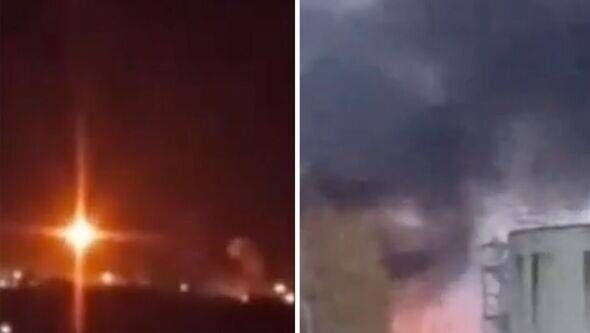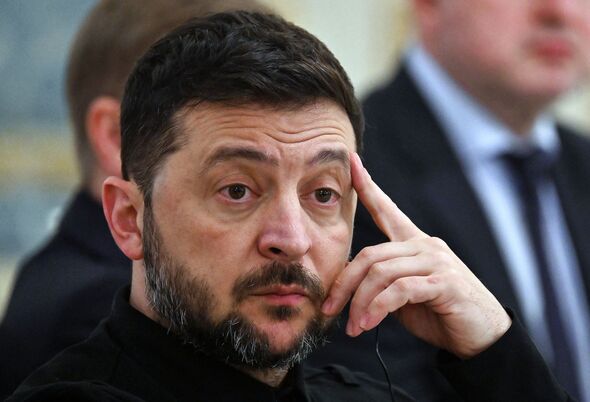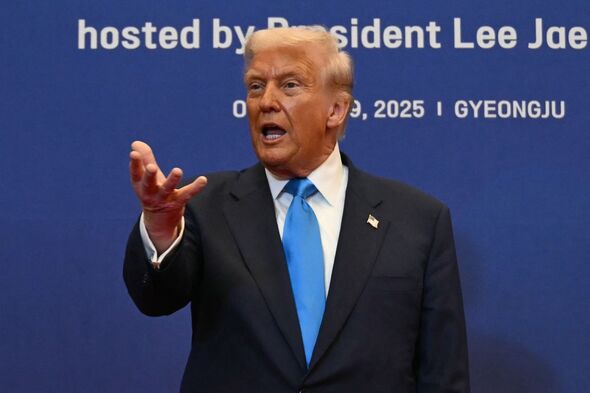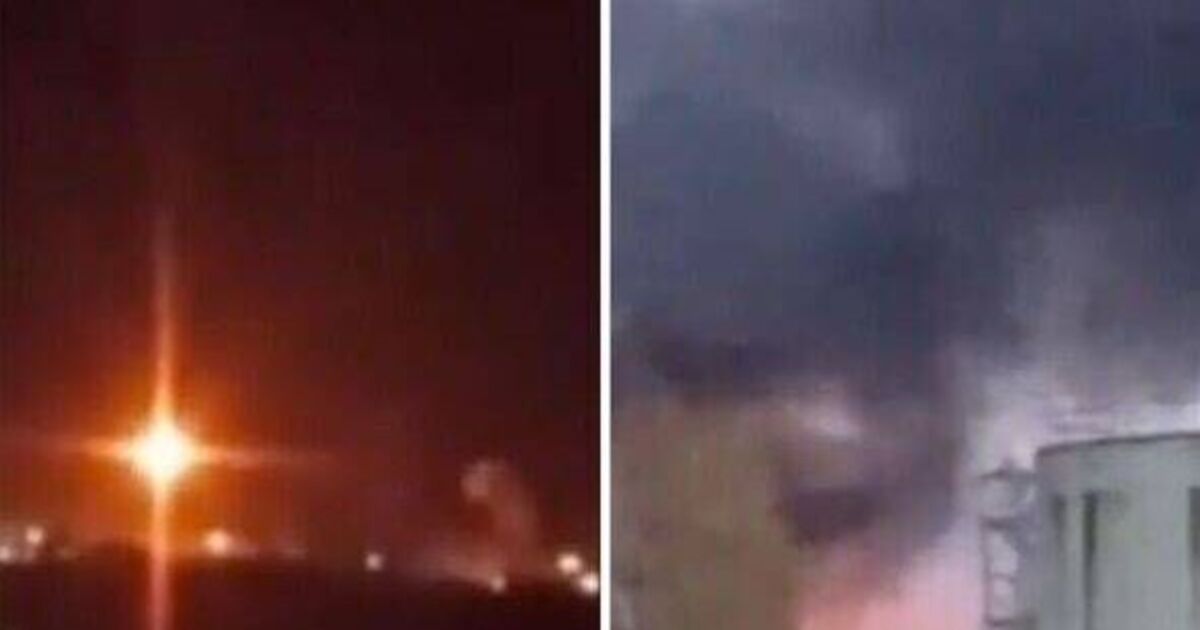
Ukraine has targeted Russian energy facilities in recent days, including in the Ulyanovsk region (Image: X)
Blazes consumed industrial facilities across western Russia during the night as Ukraine launched a massive drone assault deep into hostile territory for the third straight evening, striking oil refineries and chemical facilities that fuel Moscow’s war machine. The mission also featured drones advancing toward the Russian capital and resulted in the shutdown of three major airports.
Russian Telegram channels documented fires at the NS-Oil refinery in Novospasskoye, Ulyanovsk Oblast – approximately 700 miles from Ukraine’s border – with footage displaying dense black smoke billowing from processing units. In adjacent Stavropol Krai, the Lukoil-operated Stavrolen chemical facility, which manufactures benzene and polyethylene utilized in military purposes, was burning, based on video evidence circulated online.
Moscow Mayor Sergei Sobyanin verified air defenses destroyed at least three drones advancing toward the capital, with wreckage triggering minor blazes in outlying areas.

President Donald Trump has said the US has nuclear subs ‘just off Russia’ (Image: Getty)
Russian officials reported they neutralized 100 Ukrainian drones throughout regions overnight, including six approaching Moscow and 13 above border territories. The attacks interrupted operations at three major airports, including Vnukovo and Domodedovo.
The suspected bombardments correspond with Ukraine‘s summer-long offensive against Russian energy infrastructure and coincide with Kyiv’s deployment of domestically manufactured long-range drones to target military and industrial locations. Russian authorities have denounced the operation as “terrorist aggression” and pledged retaliation, reports the Express.
The missile strikes took place just two days after President Donald Trump criticized Russian President Vladimir Putin‘s Burevestnik nuclear-powered cruise missile test, which was conducted on October 21 and publicly announced on October 26.

Volodymyr Zelensky at meeting (Image: Getty)
While aboard Air Force One on October 27, Trump expressed his disapproval of the 15-hour, 8,700-mile flight, calling it “not appropriate”. He urged Putin to concentrate on ending the conflict with Ukraine instead of testing missiles.
Trump mentioned a US nuclear submarine located “right off their shores”, adding that “We test missiles all the time.”
Trump’s comments sparked concerns about nuclear brinkmanship, particularly after Putin – dressed in military fatigues at a command post – boasted that the Burevestnik was “truly a unique weapon, one that no other country in the world possesses”, and ordered preparations for deployment.

Donald Trump in South Korea (Image: Getty)
This test came on the heels of last week’s nuclear drills, during which Putin warned of a “very serious, if not crushing, response” to deep strikes by Ukraine using Western weapons. According to state television, Sergei Karaganov, a hawkish analyst, described the exercises as “a rehearsal for a first strike, intended as punishment or a warning in the event of further aggression against Russia“.
Jeffrey Lewis, a nuclear expert, commented on X: “Russia‘s nuclear-powered cruise missile Burevestnik isn’t invincible … NATO aircraft could intercept it”, but he also warned that it represents “another step in an arms race that offers no victory for either side.”
During the early hours of October 29, Russian forces unleashed a barrage of drones and missiles targeting Ukraine‘s major urban centers, resulting in at least four fatalities and six injuries in Kharkiv, where a medical facility and apartment buildings sustained direct hits, Ukrainian authorities confirmed.
An additional two individuals were wounded in Kyiv from drone attacks, Mayor Vitali Klitschko announced. Ukrainian Air Force units successfully neutralized over 40 incoming projectiles, though power outages and infrastructure damage were reported throughout eastern and southern regions.
Mr Trump’s October 22 economic penalties against Lukoil and Rosneft, Russia‘s leading petroleum exporters responsible for half of Moscow’s crude shipments, are designed to force a cessation of hostilities. The restrictions prohibit American transactions and threaten secondary sanctions on international financial institutions, Treasury Secretary Scott Bessent stated, who “called on Russia to immediately agree to a ceasefire in Ukraine“.
Lukoil has declared its intention to divest international holdings – including processing facilities in Bulgaria, Romania and the Netherlands – under a temporary exemption lasting until November 21, while pursuing deadline extensions as necessary. Rosneft’s German investments continue under Berlin’s control.
The economic measures specifically target shipments to India and China, where these companies provide 60% of New Delhi’s Russian petroleum imports, GlobalData TS Lombard economist Shumita Deveshwar noted. Mr Trump simultaneously imposed a 25% levy on Indian merchandise entering the United States.
Kremlin spokesman Dmitry Peskov responded: “We are offering our product. This product is of strategic importance to many countries. It is competitive, it is attractive. And then it’s up to the countries themselves to decide how attractive it is and how much other alternatives offered can compete with our products.”
Russian Foreign Minister Sergei Lavrov rejected Mr Trump’s frontline-freeze ceasefire proposal over the weekend, claiming the US stance on Ukraine had “radically changed.”
With US-Russia communications severed and NATO tracking Moscow’s Oreshnik missile deployment in Ukraine, the reciprocal attacks – from Ulyanovsk to Kharkiv – threaten to escalate into a wider conflict.
